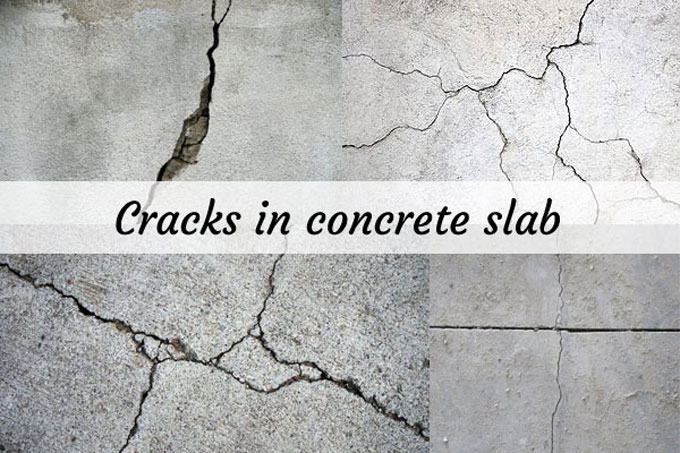
Reasons behind crack in concrete slab
If any negligence happens during making of concrete slabs then any type of cracks may occur in construction. There are many reasons behind a crack in concrete slab. The reasons are
1. Water intrusion
2. Change of temperature
3. Heat of sun.
Types of Crack
There are many types of cracks occur in concrete slabs. Types of crack are mentioned below.
Uncontrolled Curving Crack
This type of crack may occur because of dryness. It happens after few months to few years after making. Moisture may reduce from the concrete slab. If any kind of internal or external restraint prevent curving movement then stresses can be developed.
If stress of concrete increases the tensile capacity then crack may be developed. Slabs are very pervious. In the whole process surface of slabs affected very fast. When the inner section of concrete prevented the movement then surface of cross section may be cracked.
Concrete of corner and edges is very prone to cracking. As that place loss the moisture. There is no specific pattern of curving cracking due to dryness because the cracks can happen in any location.
Blowups
Blowups happen there because of high temperature and moisture. Excessive expansion can happen. This type of cracks happens between joints. If the joint of concrete fill with material during hot weather then it may cause high stresses.
If the stresses become bigger then the slabs may be shattered to free the stresses. Blowups quickly increase due to joint spalling, cracking ice melting damage.
Pop-outs
Because of low quality of material and workmanship, huge temperature small piece of concrete can break from the surface of concrete. This situation of concrete slabs is called pop-outs.
The normal size of pop-outs is 25 to 100 mm in diameter and 13 to 50 mm in depth. Pop-outs is happened in concrete because of alkali-silica reaction. It may happen between weeks to year after concrete placement.
Expansion Crack
During summer concrete slabs will expand after couple of hours. Huge stress creates on the particular slabs. When the slabs are getting expand due to hot weather then it pushes against anything like another concrete slabs.
If none of the cracks have the ability of flexibility then crack happen between them. The joints of concrete slabs are separated then to prevent further cracking.
Corner Break
A crack that divides the joint of slabs is called corner break or corner crack. The causes behind this type of crack are mentioned below.
1. Stresses of high corner
2. Loss of soil supports
3. Load transfer
Results:
a. Trespasses of moisture
b. Fault of workmanship
c. Spalling in pavement slab
d. Division in the concrete slabs.
Solution: Full depth repair is the only solution to prevent this type of crack further.
Settlement Cracks
This type of cracks indicate the insufficient preparation like failing to pour elements in particular slabs. Underlying pipe culvert and slab culvert are more prone than others. This type of cracking happens on subbase and subgrade. It happens mainly in rainy season.
Punch-out
When a small portion of concrete slab break into many pieces then it is called punch-out. It can cause roughness of the pavement surface.
Crazing Cracks
This type of cracks looks like spider webs or shattered glass. When the top surface loose the moisture then this type of cracks may happen in the concrete. It is not a structural problem at all. There is no need to repair such type of crack.
Crusting Crack
During concrete stamping process this type of crack may happen. It mainly happens in sunny days. When the top of slab dries and the bottom of slab does not dry then this type of crack may be happened.
If viewers find this article informative and useful please give feedback below this article and let us know about your opinion.

Image Courtesy: constrofacilitator.com

